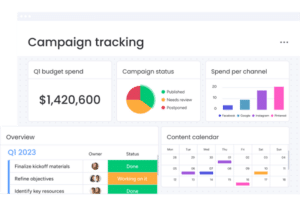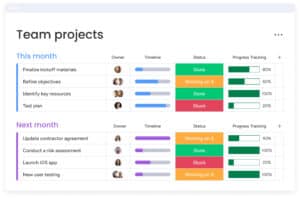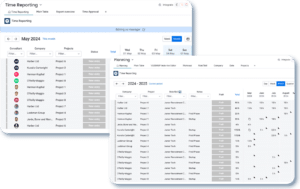Introduction
What Are Integration Platforms and Why Do They Matter?
In today’s digitally-driven business landscape, the role of integration platforms cannot be overstated. These platforms serve as the backbone for seamless data flow across various business functions, be it Sales, Marketing, Operations, or HR. From automating mundane tasks to synchronizing data between disparate systems, they are the unsung heroes in the business ecosystem. In this post, we’ll be comparing top integration platforms for seamless data flow.
The Need for Comparing Top Integration Platforms for Seamless Data Flow
As businesses grow, their technological needs become more complex. The quest for the ideal integration platform often turns into a maze of options with varying capabilities and limitations. That’s why this article aims to cut through the noise by comparing top integration platforms for seamless data flow. We’ll evaluate how they stack up against each other in terms of scalability, ease of use, versatility, and cost-effectiveness.
Why Make Takes the Center Stage
In our comprehensive comparison, one platform stands out as a shining star—Make. While other platforms offer an array of features, Make takes it a step further by providing unparalleled flexibility, cost-efficiency, and a user-friendly interface. We’ll delve into why Make could be the game-changing solution your business needs.
What to Expect
In the sections to follow, we will lay down the criteria for evaluating integration platforms, compare top contenders including Zapier, Microsoft Power Automate, and Tray.io, and demonstrate why Make might just be the best fit for your organizational needs.
The Importance of Integration Platforms
In an age where data is often termed as the ‘new oil,’ businesses increasingly find themselves dealing with an avalanche of information. Managing and leveraging this data effectively is essential, and this is where integration platforms enter the picture.
The Data Deluge and Business Needs
Today, companies generate and consume data at an unprecedented rate. This data comes from various sources like customer interactions, operations, sales figures, and marketing campaigns. Businesses need a way to make sense of this scattered data, organize it cohesively, and use it to drive informed decisions. When we talk about comparing top integration platforms for seamless data flow, we’re essentially discussing tools that can turn this data deluge into actionable insights.
Bridging the Gap Between Different Business Functions
As organizations expand, they often find themselves using a plethora of tools and software for different departments. Sales teams may rely on CRM software; marketing teams could be using marketing automation platforms, while HR might be dependent on talent management systems. The list is endless. Integration platforms act as a bridge, ensuring seamless communication between these different software solutions, thereby making operations more efficient.
Ensuring Real-time Data Availability
In a fast-paced business environment, real-time data availability can be a game-changer. Integration platforms allow for immediate data synchronization across multiple platforms, ensuring that all teams have access to up-to-date information. This real-time capability is a critical factor when comparing top integration platforms for seamless data flow.
Compliance and Security Concerns
Given the sensitive nature of data, businesses must also consider compliance and security features when choosing an integration platform. Platforms should not only integrate seamlessly but also adhere to industry standards and regulations, ensuring that your data is secure at all times.
Scalability and Future-Proofing
No business remains static; it either grows or contracts. The right integration platform should be able to adapt to your business’s changing needs. Scalability is an often overlooked feature that becomes crucial as your organization expands. Make, our shining star in the world of integration platforms, offers exceptional scalability options, setting it apart from competitors.
Omnitas Newsletter
Sign up for our monthly newsletter to stay up-to-date on our latest blog articles, videos and events!
Thank you!
You have successfully joined our subscriber list.
Criteria for Evaluating Integration Platforms
Choosing the right integration platform can be a daunting task, especially with the multitude of options available. But worry not, we’ve got you covered. In the process of comparing top integration platforms for seamless data flow, there are several criteria that you should consider to make an informed decision.
Scalability
Your business isn’t static; it will grow, evolve, and possibly even pivot. The ideal integration platform should scale along with your needs without requiring an overhaul. Scalability can be in terms of the number of connections, data volume, or the complexity of the workflows you can create.
Ease of Use
No one wants to spend countless hours deciphering how to set up and operate an integration platform. A good measure of a platform’s utility is its ease of use. This includes not only the user interface but also the ease with which you can build or modify workflows. Make, for example, is renowned for its intuitive interface and user-friendly design.
Versatility & Compatibility
In the digital age, businesses use a plethora of software and tools that serve a range of purposes. A top-notch integration platform should have the capability to connect to a variety of systems, be they CRMs, ERP systems, marketing platforms, or even custom-built applications.
Cost-Effectiveness
The cost of implementing an integration platform should justify the value it brings to your business. This involves not just the upfront costs, but also the ongoing maintenance and any potential costs for additional features or scalability. Cost-effectiveness is an essential aspect when comparing top integration platforms for seamless data flow.
Reliability & Support
Nothing can be more frustrating than running into an issue and not getting timely support. When evaluating integration platforms, consider the reliability of the platform and the quality of customer support. Does the platform offer 24/7 support? Are there community forums, documentation, and training materials available?
Compliance & Security
As mentioned in the previous section, compliance and security should not be an afterthought. You need to ensure that the platform you choose adheres to industry-specific regulations and has robust security measures in place.
Overview of Top Integration Platforms
In a crowded marketplace, a few names often stand out for their performance, features, and customer satisfaction. As we delve into comparing top integration platforms for seamless data flow, we’ll take a closer look at these giants: Zapier, Microsoft Power Automate, Tray.io, and Make.
Zapier
Zapier is a veteran in the integration landscape, offering a wide range of pre-built connections known as “Zaps” between various applications. While it has been a go-to choice for small to medium businesses, it often faces criticism for limitations in complex workflow capabilities.
Microsoft Power Automate
Formerly known as Microsoft Flow, this platform offers deep integration within the Microsoft ecosystem. It is robust and capable but often considered less flexible and more complex to set up compared to other solutions.
Tray.io
Tray.io has carved a niche for itself by providing a platform that caters to enterprise-level needs. With its powerful, flexible workflow automation, Tray.io is a platform that is often chosen by businesses looking for highly customized solutions.
Make
Last but not least, we have Make, formerly known as Integromat. Make distinguishes itself through its highly intuitive interface, cost-effectiveness, and exceptional scalability. It offers a plethora of connectors and has the versatility to handle complex workflows, making it a stellar choice for businesses of all sizes.

In-Depth Comparison
With an understanding of what each platform offers and the criteria for evaluation in mind, let’s get into the nitty-gritty of comparing top integration platforms for seamless data flow.
Scalability
- Zapier: Good for small to medium-sized businesses but can become expensive and less efficient as the number of Zaps increases.
- Microsoft Power Automate: Offers enterprise-level scalability but often at the cost of complexity.
- Tray.io: Highly scalable but focused more on enterprise-level needs, which may be overkill for smaller businesses.
- Make: Exceptional scalability that caters to businesses of all sizes, ensuring that as your business grows, your integration capabilities can grow with it.
Ease of Use
- Zapier: User-friendly for basic tasks but less so for complex workflows.
- Microsoft Power Automate: Comes with a learning curve, especially for those not familiar with the Microsoft ecosystem.
- Tray.io: Requires a significant level of technical expertise to fully utilize its features.
- Make: Known for its intuitive interface and user-friendly design, making it accessible for both tech-savvy and non-tech-savvy users alike.
Versatility & Compatibility
- Zapier: Good range of pre-built connectors but limited in terms of custom connections.
- Microsoft Power Automate: Strong within the Microsoft suite but less flexible with external platforms.
- Tray.io: Highly versatile but may require custom development for specific needs.
- Make: Offers a wide range of connectors and the flexibility to build custom integrations, setting it apart from the competition.
Cost-Effectiveness
- Zapier: Starts off cheap but can become costly as you scale.
- Microsoft Power Automate: Licensing can be complicated, adding to the total cost of ownership.
- Tray.io: Geared towards enterprises, making it less cost-effective for smaller businesses.
- Make: Provides a cost-effective solution that scales well with your business, offering the best value for your investment.
Reliability & Support
- Zapier: Reliable but limited support options.
- Microsoft Power Automate: Strong reliability but support is often tied to enterprise agreements.
- Tray.io: Offers robust support but at a premium price.
- Make: Combines reliability with exceptional support, offering multiple channels of communication for customer assistance.
Compliance & Security
- Zapier: Standard compliance measures in place but limited customization for industry-specific needs.
- Microsoft Power Automate: Strong compliance measures but can be cumbersome to set up.
- Tray.io: High level of compliance for enterprise needs.
- Make: Exceptional focus on compliance and security having its servers based in the EU making it GDPR compliant. It’s also customizable to meet industry-specific requirements.
In this in-depth comparison, it’s evident that while each platform has its merits, Make consistently shines across various criteria, making it a versatile and reliable choice for businesses looking for seamless data flow.
Conclusion
The digital transformation journey for any business is fraught with choices, especially when it comes to selecting the right tools for data integration. Throughout this blog post, we’ve delved into comparing top integration platforms for seamless data flow based on essential criteria such as scalability, ease of use, versatility, cost-effectiveness, and more.
The Final Verdict
Each platform we’ve discussed has its own set of advantages and drawbacks, catering to different business needs and sizes. However, when we consider all aspects from versatility to cost, Make consistently stands out as the shining star among integration platforms. It offers a perfect blend of usability, scalability, and affordability, making it a compelling choice for businesses looking to streamline their data flow effectively.
Why Choose Make?
Make excels in multiple criteria, providing a cost-effective and versatile platform suitable for businesses of all sizes. With its intuitive interface, exceptional customer support, and a wide range of connectors, it offers unparalleled value. Additionally, it’s designed with scalability in mind, ensuring it will serve your growing business needs in the long term.
The Future of Data Integration
As businesses evolve and data integration needs become more complex, choosing the right platform becomes even more critical. With platforms like Make pushing the envelope on what’s possible, it’s an exciting time to be part of this technological landscape.
If you’re intrigued by the numerous advantages Make offers and are considering it as your go-to integration platform, don’t hesitate to reach out to us at Omnitas. Our team of experts can guide you through the implementation process, ensuring you get the most out of your investment. For those eager to explore Make firsthand, click the link below to enjoy a free Pro account for one month. To stay up-to-date on similar content that can empower your business, don’t forget to subscribe to our monthly newsletter.
























